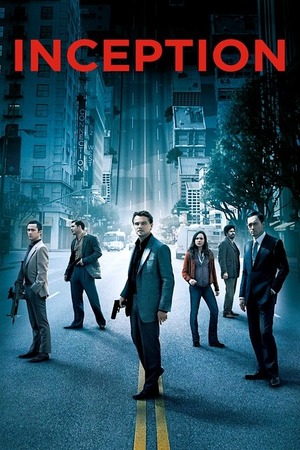
Directed by: Christopher Nolan
Starring: Leonardo DiCaprio, Joseph Gordon-Levitt, Ellen Page, Tom Hardy, Marion Cotillard, Cillian Murphy, Ken Watanabe
🌀 Introduction: The Dream Within the Dream
Inception (2010) is not only a cinematic labyrinth of dreams and reality but also a launchpad for an entire generation of film theorists, online debaters, and armchair psychologists. Christopher Nolan’s visionary thriller, centering on Dom Cobb’s (Leonardo DiCaprio) quest for redemption through one last job in the world of dream espionage, left audiences with a famously unresolved ending: does the spinning top fall, or is Cobb still dreaming? More than a decade later, viewers are still dissecting every frame, searching for clues, codes, and meaning. This post explores the most enduring and intriguing fan theories, unpacking the evidence for and against each and reflecting on why Inception’s ambiguity is its greatest strength.
🌙 Theory One: The Entire Film is a Dream
This “all-a-dream” theory suggests that every level of the film, including what we believe is “reality,” is actually part of Cobb’s subconscious. Advocates point to the persistent use of dreamlike imagery—cities folding onto themselves, gravity-defying hallways, shifting architecture, and the ever-present fog of Cobb’s memory. Even the film’s opening, which mirrors the ending, hints at a circular, non-linear structure—echoing the experience of dreaming itself.
Proponents also note that the rules of the Inception universe (like the way time expands in dreams, and the mechanics of the “kick”) are explained through expository dialogue that resembles dream logic more than scientific explanation. They argue that Cobb’s memories of his wife Mal (Marion Cotillard) and children are fragmented, idealized, and never show their faces—a classic sign of unresolved guilt and dream construction. In this reading, the film becomes a meditation on the impossibility of escaping one’s subconscious and the ways we construct and inhabit comforting fictions.
🔔 Theory Two: The Top Isn’t Cobb’s Real Totem
One of the film’s most hotly debated clues is the spinning top, supposedly Cobb’s totem—his private way to distinguish dream from reality. But sharp-eyed viewers have noticed that the top originally belonged to Mal, not Cobb. Instead, Cobb’s own totem is never clearly shown or identified. Some theorists believe that the true totem is Cobb’s wedding ring, which appears in dreams but not in waking life; others suggest it is his children’s faces, finally seen clearly only at the end.
This uncertainty amplifies the ambiguity of the ending. If the audience cannot be sure what Cobb’s real totem is, can we ever know if he is truly awake? Nolan himself has refused to clarify, stating that the film is about Cobb’s journey to let go of guilt and accept happiness—whether real or dreamed.
🔄 Theory Three: Saito’s Promise and the Circular Narrative
Another layer of debate centers on Saito’s (Ken Watanabe) role and the film’s cyclical narrative. Some fans argue that Cobb and Saito are both lost in limbo, endlessly repeating the same mission until one or both find a way out. The film’s structure supports this: the opening and ending mirror each other, and certain lines (“Come back so we can be young men together again”) hint at a looped timeline.
Others point to the moment when Cobb washes up on the shore of Saito’s limbo and is greeted by guards—an event that echoes their earlier meeting, blurring the line between memory, dream, and lived experience. Is Cobb’s apparent reunion with his children another layer of limbo—a dream he has chosen to inhabit forever?
🎭 Theory Four: The Ending is Intentionally Ambiguous—And That’s the Point
Perhaps the most widely embraced theory is that Nolan’s ending is deliberately unresolved, forcing both Cobb and the audience to make a choice. When Cobb spins the top and walks away, he is finally able to look past the need for certainty and embrace happiness, guilt-free. The camera lingers on the spinning top, which wobbles—but cuts to black before it falls. The point is not whether Cobb is awake or dreaming, but that he no longer cares. For viewers, this means that meaning is found not in resolution, but in the willingness to accept ambiguity and move forward.
🔍 Evidence, Red Herrings, and Nolan’s Intent
Nolan’s meticulous craftsmanship is both a gift and a trap for theorists. Every detail—costume, dialogue, even background sound—can be read as a clue or a misdirection. Fans have poured over the number of dream layers, the mechanics of “the kick,” and the behavior of Cobb’s companions, arguing about who is real, who is a projection, and what any of it “means.” Yet, in interviews, Nolan has emphasized that the film is as much about storytelling itself as about dreams. Inception, he suggests, is a metaphor for cinema—the process of creating shared illusions that allow us to confront our deepest fears and desires.
🎯 Final Thoughts: The Debate That Never Ends
In the end, Inception’s greatest achievement may be its refusal to provide a single answer. By inviting viewers to participate in the construction of meaning, it transforms the film from a passive experience into an active collaboration. Theorists will continue to debate the clues, symbols, and hidden messages for years to come. But perhaps the most important lesson is that some questions are meant to remain open—spinning forever, just like Cobb’s totem.